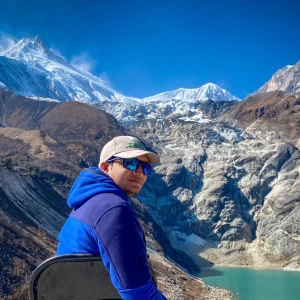Nepal is a land of three distinct regions: the Himalayas, the mid-hills, and the southern Terai plains. Each region offers its own kind of travel experience.
Handpicked Tours and Trekking in Nepal
Table of Contents
You can trek in the high mountains, explore villages in the green hills, or enjoy wildlife safaris and cultural tours in the Terai while in Nepal.
In this article, we will look at the best tours and trekking in Nepal across all three regions. These are some of the top experiences that travellers often include in their Nepal journey.
From short scenic tours to longer hiking trips in Nepal, you’ll find clear details about each destination. This will help you choose the right trip based on your time, interest, and travel style.
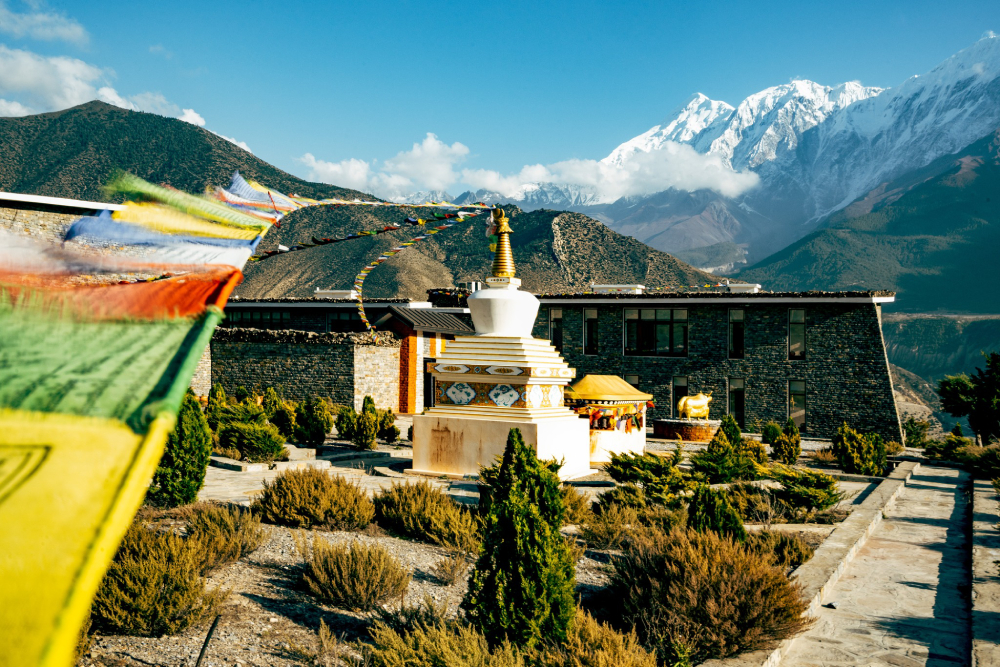
Best Time for Tours and Trekking in Nepal
Most tour experts agree that the best time to travel in Nepal is during spring (March to May) and autumn (September to November). These months offer the most stable weather and the clearest mountain views. Here's a breakdown of what to expect in each season to help you make the right choice.
Spring (March to May)
Spring is a great time for both tours and trekking in Nepal. The days are warm, and the nights are cool. Rhododendrons and other wildflowers bloom across the hills and forests, adding colour to the trails.
Although spring is slightly less busy than autumn, it's still an active season. This is also the main time for mountaineering, so you’re likely to meet climbers heading to Everest, Annapurna, and other peaks. For trekkers, this season offers lively trails and good weather without extreme cold.
Autumn (September to November)
Autumn is the most popular travel season in Nepal. The skies are clear, the air is crisp, and the views of the mountains are often at their best. The monsoon ends in early September, leaving behind fresh greenery and clean air.
This season also brings major festivals like Dashain and Tihar, offering a chance to experience local culture. With stable weather and good visibility, autumn is ideal for trekking, touring, and photography.
Winter (November to February)
If you are planning helicopter tours or mountain flights, winter is one of the best times. The skies are clear, and the snowfall makes the Himalayas look especially stunning from the air.
While trekking is still possible at lower altitudes, high passes can be closed due to snow. Winter is quieter and less crowded, making it a good choice for those looking for peaceful short treks, cultural tours, or scenic flights.
How safe are Tours and Trekking in Nepal
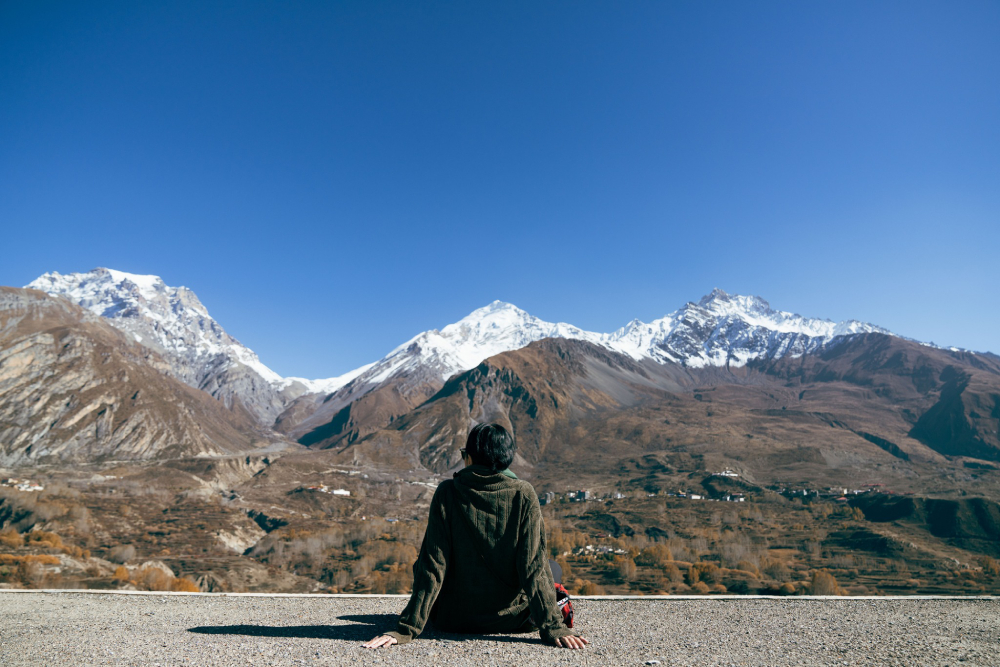
Nepal is considered one of the safest countries in South Asia for travel. Most trekking routes, tour sites, and mountain flights operate smoothly with trained professionals. Whether you're walking through remote trails or flying over the Himalayas, safety standards are well followed.
That said, Nepal’s mountainous terrain is unfamiliar to many travellers. For this reason, guided tours and treks are strongly recommended. Having a guide helps you navigate the trails safely and gives you a deeper understanding of local culture and nature.
Even in a safe country like Nepal, unexpected events can happen. These may include flight delays, weather changes, or altitude sickness in high areas. To stay protected, always buy travel insurance before your trip. It ensures that your trip value is covered and gives you peace of mind during your journey.
Some amazing Tours and Trekking Destinations in Nepal
Nepal offers a wide range of tours and treks for all kinds of travellers. From the iconic Everest region to the cultural hubs of Kathmandu, the natural beauty of Pokhara, the trekking trails of Annapurna, and the jungles of Chitwan, each destination has something special.
Whether you're travelling with kids, as a couple, solo, or with friends, there’s a trip suited for you. Every region offers a unique mix of landscapes, culture, and adventure.
Tours and Trekking in Nepal in the Everest region
The Everest Region is one of the most iconic destinations for tours and trekking in Nepal. For many travellers visiting Nepal for the first time, seeing Mount Everest is a top priority.
This region offers options for both short and long trips. You can choose a scenic helicopter tour for a quick view or go on a multi-day trek to explore Sherpa villages, monasteries, and stunning mountain landscapes. From Everest Base Camp Trek to short treks around Namche Bazaar, the Everest region has something for every level of traveller.
Everest Base Camp Trekking
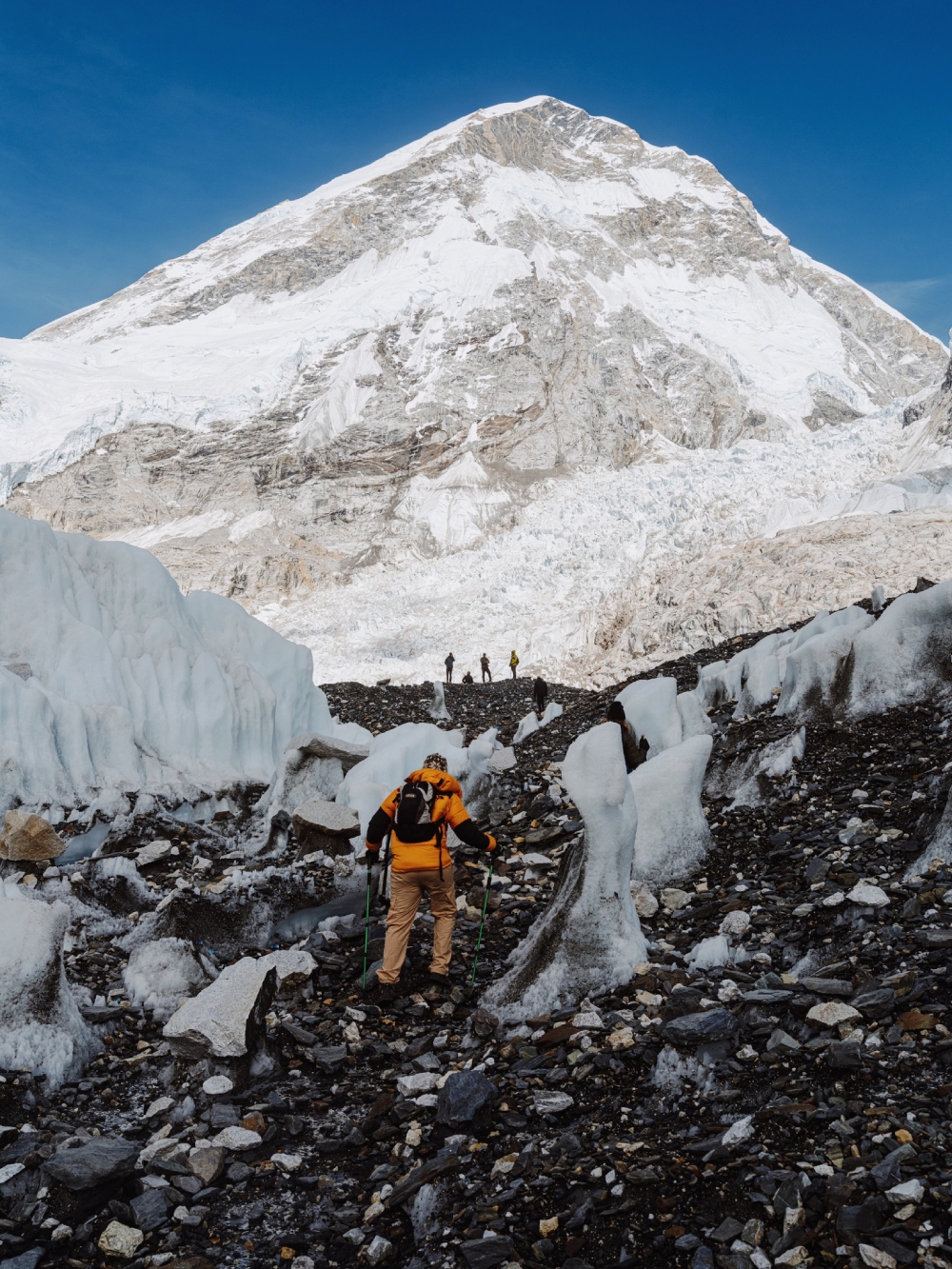
The Everest Base Camp Trek is one of the most popular treks in Nepal. The classic walking route to EBC takes 12 days and starts with a scenic flight to Lukla. From there, you trek through Sherpa villages, cross suspension bridges, and climb up to Namche Bazaar, one of the busiest mountain towns in the Himalayas.
This trek is challenging and involves long walking days at high altitude. It is best suited for travellers with good physical fitness and prior hiking experience. Altitude, rugged terrain, and weather conditions can make it tough for beginners.
Join our Cheapest Everest Base Camp Trek
Modified/Luxury Everest Base Camp Treks
If you're not ready for a full 12-day trek, there are more comfortable alternatives:
- Trek up, return by helicopter:You trek all the way to Everest Base Camp, then return to Lukla by helicopter. This reduces walking days and gives you a scenic aerial view on your way back.
- Short trek with helicopter experience: You hike for a few days to Debuche, Pangboche, or Kongde - all under the tree line and at a safer altitude for acclimatisation. Then, you take a helicopter to Gorakshep, trek to Everest Base Camp, and return the same day by helicopter.
These options offer a more relaxed approach to visiting Everest Base Camp in Luxury. They allow you to enjoy the mountain scenery and Sherpa culture without the physical strain of a full trek.
What About Altitude Sickness?
Even with the shorter versions, the risk of altitude sickness is lower because your body will have had a few days to acclimatise. Many travellers have completed these modified treks safely. With proper planning, these routes offer a safe and stylish way to reach Everest Base Camp.
Everest Helicopter Tour
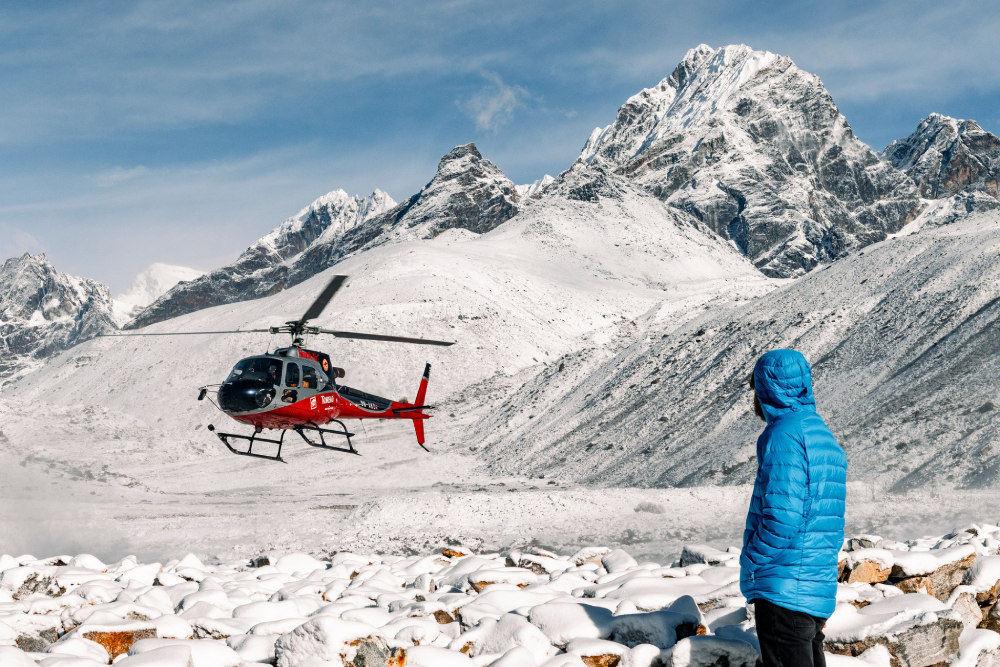
One of the easiest and fastest ways to experience the Everest region is by taking an Everest Helicopter Tour. This tour is ideal for those with limited time or who prefer not to trek.
The helicopter makes multiple landings, usually at Lukla, Hotel Everest View, and sometimes near Kala Patthar for close views of Everest. These stops offer stunning panoramic views of the Himalayas and a chance to enjoy breakfast with Everest in sight.
The full trip takes around 4 to 5 hours, including landings and flight time. Since mountain weather is unpredictable, it’s best to allow extra time on the day of the tour.
For the best chances of a smooth flight, plan this tour during winter months (November–February) or the clearer mid-seasons (spring and autumn). These times offer crystal-clear views and more stable weather conditions.
Tours and Trekking in Nepal in Annapurna
While Everest often gets the spotlight, the Annapurna region offers unmatched diversity and scenic beauty for tours and trekking in Nepal. From lush forests and terraced fields to high mountain passes and traditional villages, Annapurna covers a wide range of landscapes and cultures.
This region is one of the largest trekking areas in Nepal and is perfect for both short and long adventures. You can choose a 1-day hike or take on a 15+ day trek, with options to travel on foot or by road.
Whether you're a beginner or an experienced hiker, Annapurna has something for everyone. Here are some of the most iconic trips in this region:
Annapurna Circuit Trek
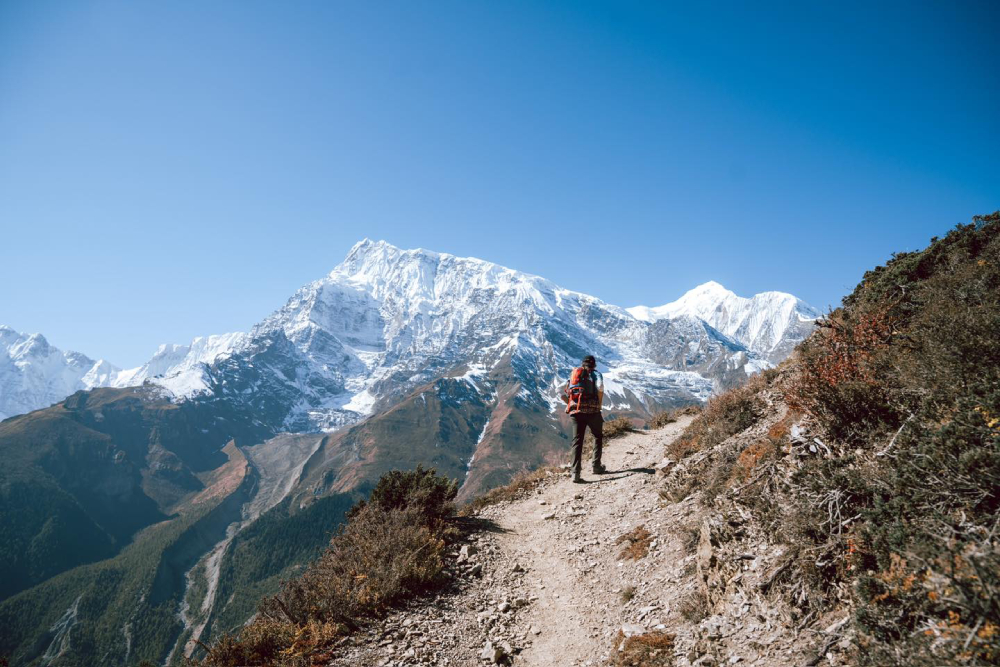
The Annapurna Circuit Trek is one of Nepal’s most iconic and diverse trekking experiences. It was once a 21-day journey, but due to road access, the trek can now be completed in 7 to 10 days, depending on your route and interest. The lower section of the trail is now reachable by off-road jeep rides, while the upper section, especially from Manang onwards, still offers a true mountain trekking experience.
During the trek, you pass through the high-altitude village of Manang, cross the famous Thorong La Pass at 5,416 meters, and enjoy side hikes like the one to Ice Lake for breathtaking Himalayan views. Many trekkers also add a visit to Tilicho Lake, one of the world’s highest freshwater lakes at 4,919 meters, which adds more adventure and beauty to the trip.
The trail moves through dramatic changes in landscapes - from green hills to barren alpine terrain - while offering a deep look into the culture of Gurung, Thakali, and Tibetan-influenced communities along the way.
Annapurna Base Camp Trek
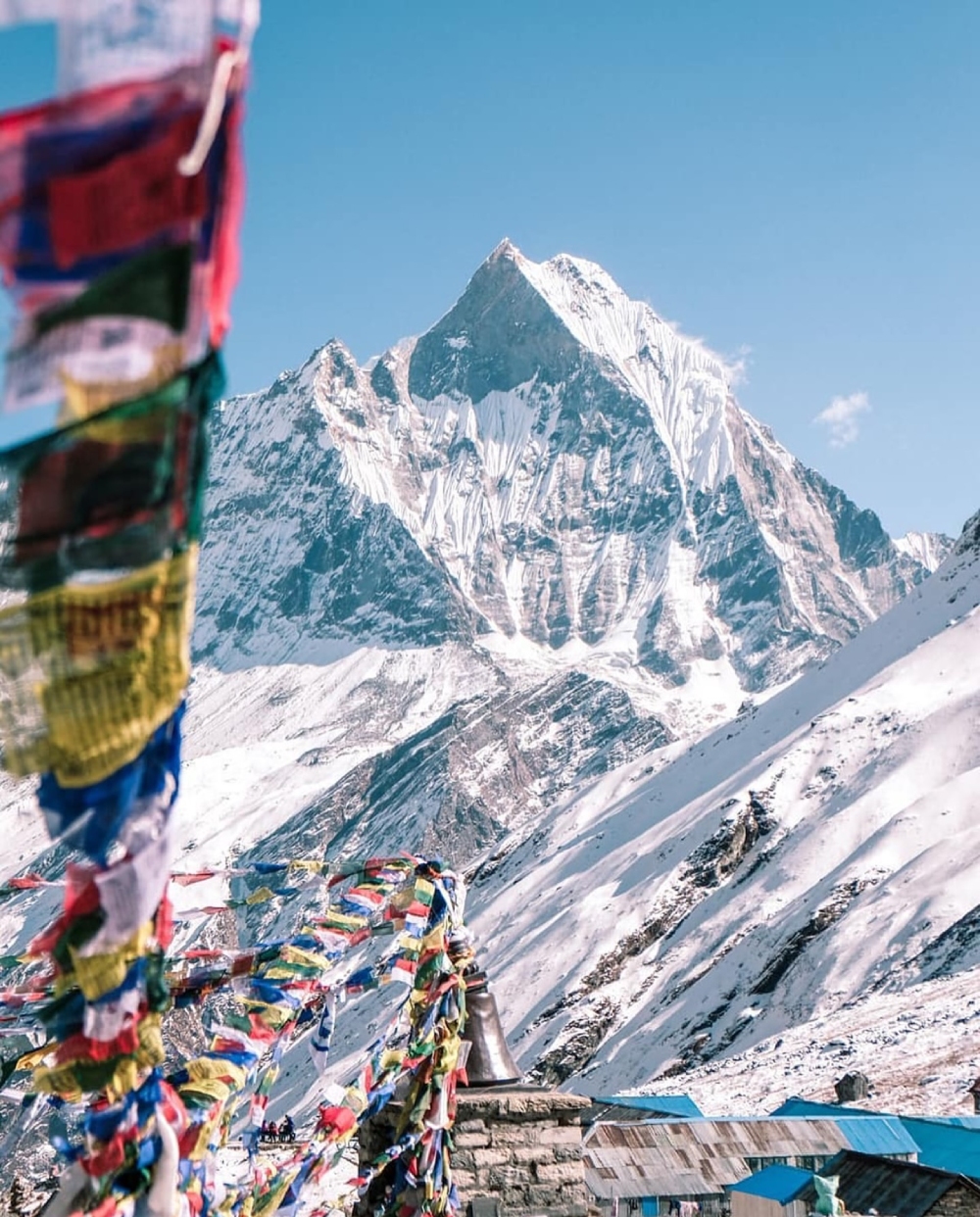
Annapurna Base Camp Trek, once a section of the full 21-day Annapurna Circuit, is now done as a standalone trek ranging from 5 to 12 days. The trek can start from several different points, including Ulleri, Ghandruk, or Jhinu Danda, depending on your time, interest, and transport access.
This trek offers a great balance of natural beauty and cultural experience. A key part of the journey is walking through traditional Gurung villages, where you can experience their warm hospitality and daily lifestyle. In spring, the trail is especially beautiful as it passes through rhododendron-filled forests, adding colour and freshness to the mountain atmosphere.
The final stretch brings you to the heart of the Annapurna Sanctuary, surrounded by towering peaks like Annapurna I, Machapuchhre, and Hiunchuli, making it a truly rewarding trek for all kinds of hikers.
Annapurna Helicopter Tour
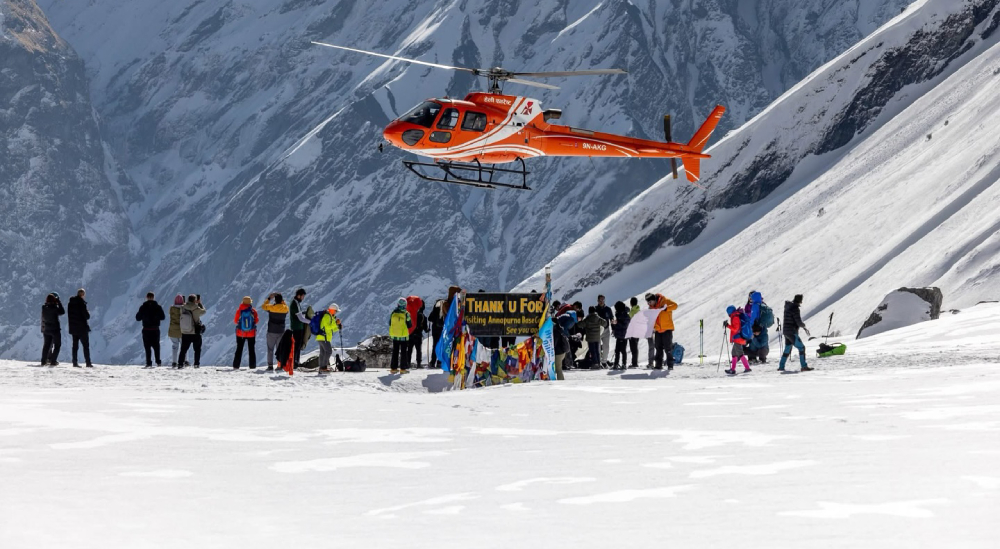
The Annapurna Helicopter Tour lets you land at Annapurna Base Camp without days of walking. The flight departs from Pokhara Airport and follows the Modi Khola valley to the sanctuary. Total travel time is about one hour, including a fifteen- to thirty-minute landing at base camp. Passengers step out at 4,130 metres and face a wall of peaks, including Annapurna, Hiunchuli, and Machapuchare. Each helicopter carries up to five passengers, making the tour easy for small groups.
Flights run in peak seasons. Clear views are most common from February to May and September to December. An Annapurna Conservation Area Permit is still required and is checked before you board. Weather can change fast, so operators schedule departures early and may delay flights for safety.
Mustang Tours and Trekking
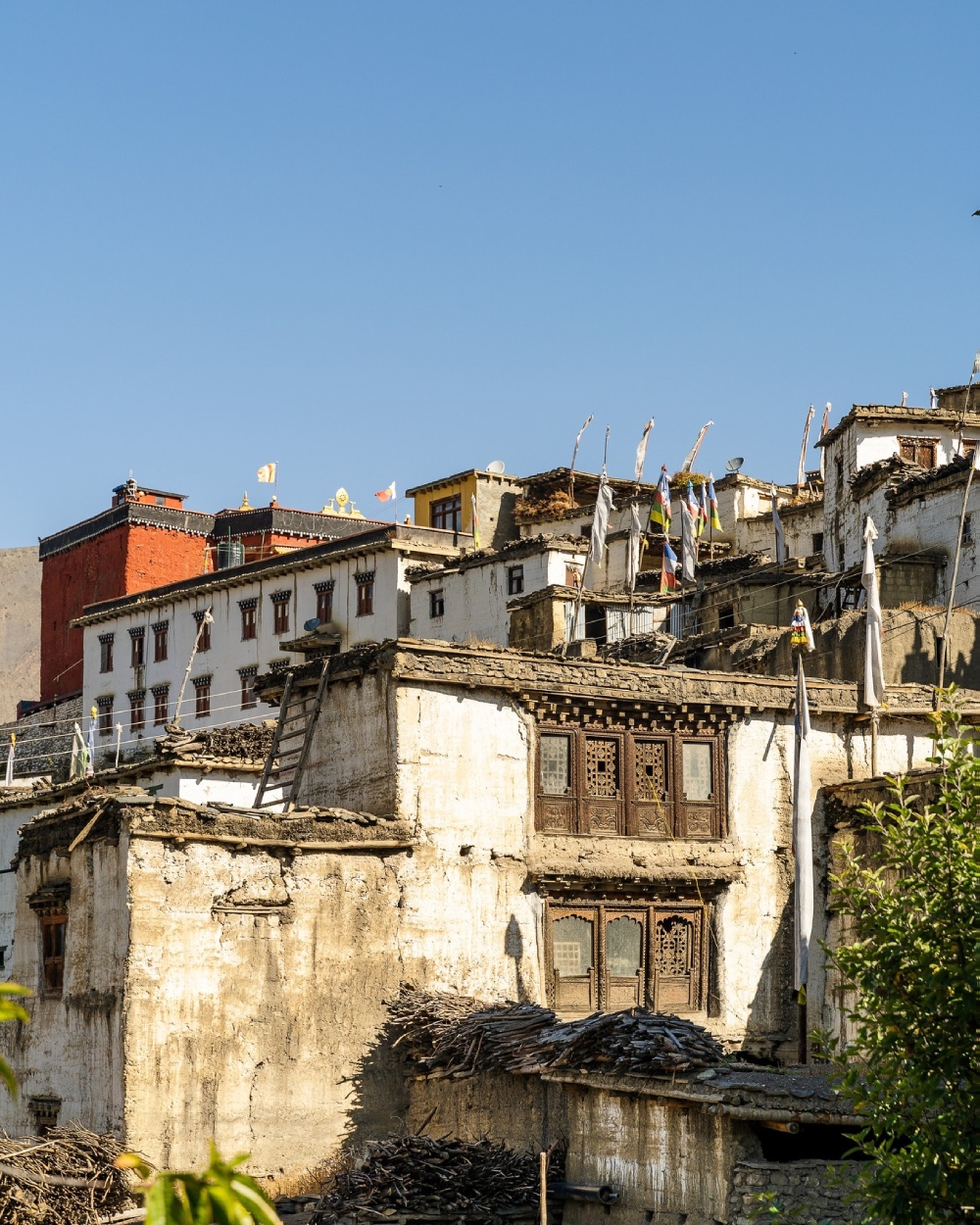
Mustang is a unique region for tours and trekking in Nepal that feels quite different from the rest of the country. Divided into Lower Mustang and Upper Mustang, this area is deeply influenced by Tibetan culture. In Lower Mustang, the Thakali community is also prominent. The region is famous for its ancient monasteries, including the 8th-century Ghar Gompa. Mustang holds an air of mystery with its rugged landscapes and rich history.
One of the fascinating features of Mustang is the ancient sky caves carved into the cliffs. These caves were used for meditation, burial, and storage by the early inhabitants and monks. Exploring these caves gives a glimpse into the region’s spiritual past and unique way of life.
Lo Manthang, the walled capital of Upper Mustang, is a highlight for many travellers. This medieval city has preserved its traditional Tibetan culture and architecture for centuries. Walking through its narrow streets, visiting old monasteries, and meeting local people offers an unforgettable cultural experience.
For tours, you can explore Mustang by 4WD jeep or trek through Mustang in its desert-like terrain over 10 to 12 days. If your time is limited, visiting just Lower Mustang is a good option. This saves you from the high permit cost of USD 500 required for Upper Mustang. Exploring Upper Mustang comfortably requires an additional 3 to 4 days to avoid altitude sickness and fully enjoy the area, along with the extra permit and cost.
Tours and Trekking in Nepal in Kathmandu
Kathmandu, the capital city of Nepal, offers a rich mix of cultural, historical, and adventurous experiences. From bustling city streets to peaceful ancient temples, Kathmandu is a gateway to many tours and trekking options.
You can explore iconic heritage sites like Durbar Square, Pashupatinath Temple, and Boudhanath Stupa with a Kathmandu day trip. The city also serves as the starting point for many treks across Nepal, making it a hub for travellers. Whether you want short cultural tours or to begin your Himalayan trekking adventure, Kathmandu has something for everyone as part of tours and trekking in Nepal.
Heritage Tours in Kathmandu
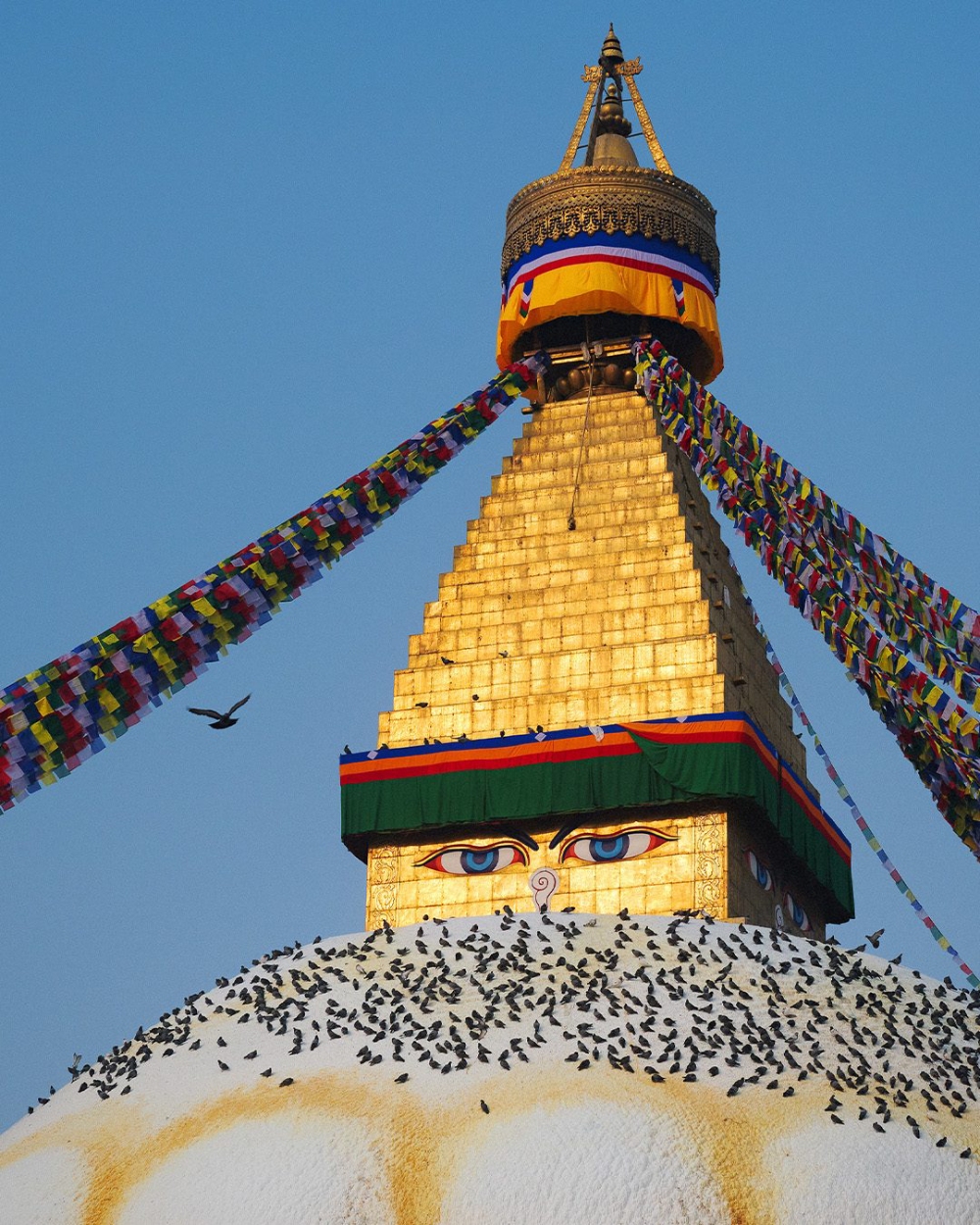
Kathmandu Valley is home to seven UNESCO World Heritage Sites, each showcasing Nepal’s rich history and culture. Beyond these, there are many beautiful places nearby, such as Panauti village, Namo Buddha monastery, Kopan Monastery, the Botanical Garden, and Chandragiri Hills.
You can explore some of the key heritage sites in a single day trip, especially if you focus on places like Durbar Square, Swayambhunath (Monkey Temple), and Boudhanath Stupa. To see all the major sites comfortably, you will need about three days. Most locations are easily reachable by smooth car rides. Visiting with a guide adds great value, as they share stories and insights that bring the history and culture to life.
Trekking and Day Hiking in Kathmandu
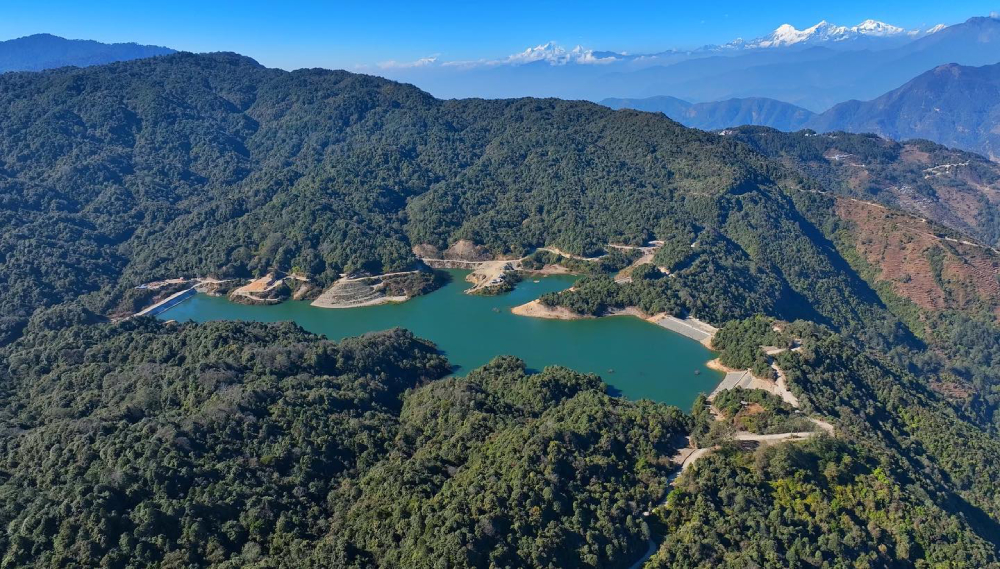
Kathmandu and its surrounding areas offer many great hiking trails. Whether you want a short day hike or a 2–3-day trekking experience, you will find lush forests and stunning mountain views nearby.
One popular day hike is the Dhap Dam trail. This hike is great because it passes through beautiful rhododendron forests and offers peaceful nature away from the city noise. It’s a moderate walk with rewarding mountain views and a quiet reservoir at the end, making it perfect for a refreshing day out.
For a longer 2–3-day trek, the Sundarijal-Chisapani-Nagarkot route is highly recommended. This trail takes you through dense forests, small villages, and ridges with panoramic views of the Himalayas, including sunrise and sunset spots. The trail is well-marked and provides a mix of nature, culture, and mountain scenery.
Both these trails are located north of Kathmandu. On the southern side, Lakuribhanjyang and Chandragiri hills offer easier day hikes of about 4 to 5 hours. These hikes are suitable for all levels and provide peaceful forest walks with scenic views of the Kathmandu Valley and nearby mountains.
Tours and Trekking in Nepal in Pokhara
Pokhara is the most versatile destination for tours and trekking in Nepal. Pokhara is the gateway to the Annapurna region and serves as a hub for trekking, cultural tours, and adventure sports. Sitting beside the serene Phewa Lake and surrounded by hills, the city offers easy access to some of Nepal’s most iconic treks. Popular treks start from here include the Annapurna Base Camp, Ghorepani Poon Hill, and Mardi Himal. Pokhara itself is at an altitude of about 820 meters (2,690 feet), making it a comfortable acclimatisation point before heading to higher elevations.
Adventure Sports in Pokhara
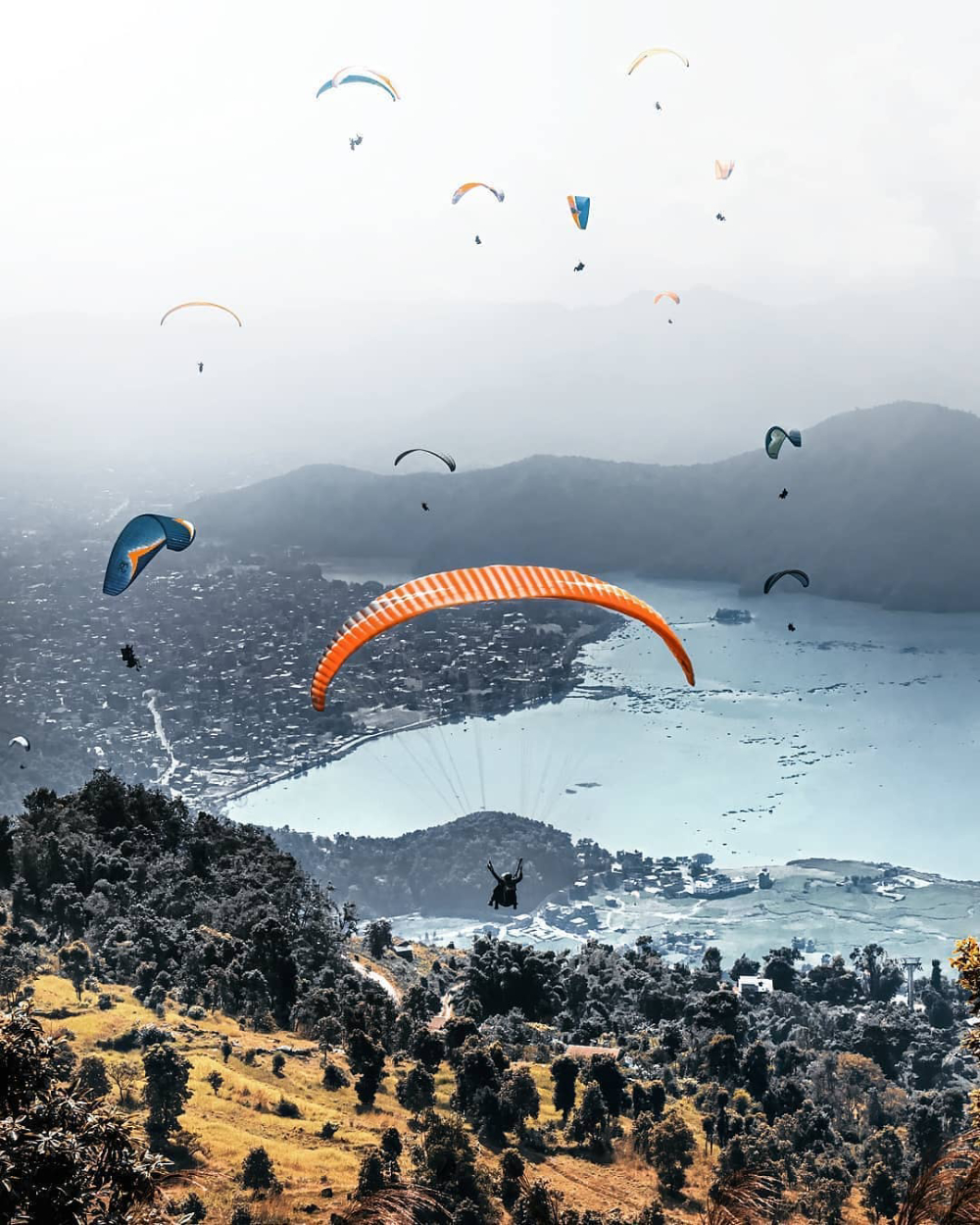
Pokhara is renowned for several adrenaline-pumping activities:
- Paragliding: Launch sites are located at Sarangkot (1,592 m), a hilltop 6 km northwest of Pokhara city. Flights take off from here, soaring over Phewa Lake and the city, with panoramic views of Annapurna, Dhaulagiri, and Machhapuchhre (Fishtail Mountain). Sarangkot is a world-class paragliding spot with consistent thermals and safe landing zones near Lakeside.
- White-water Rafting: The Seti Gandaki River and the Trishuli River are the two most popular rivers for rafting near Pokhara. The Seti Gandaki flows directly through Pokhara valley, carving deep gorges, offering Class II to IV rapids that are thrilling but manageable for intermediate rafters. The Trishuli River, about a 3–4 hour drive east of Pokhara, is a longer rafting trip famous for continuous rapids and scenic canyon views.
- Zip-lining: The zip line at the Shangri-La Adventure Park, located just outside Pokhara near Hemja, is Nepal’s longest and fastest zip line, stretching over 1.8 kilometres (1.1 miles). Riders get spectacular views of the surrounding hills and valleys.
- Mountain Biking: Trails like the route from Pokhara to Dhampus and beyond offer challenging and scenic rides through terraced farmland and traditional villages.
- Boating: Phewa Lake boating is a relaxed activity, but offers great views of the Annapurna range. Boats can be rented from the Lakeside area.
Pokhara Heritage Tours
Pokhara offers cultural tours that showcase its rich heritage. Visiting the old city areas, temples, and traditional Newari villages gives travellers insight into local life. The Bindhyabasini Temple, Tal Barahi Temple on Phewa Lake, and the World Peace Pagoda are among the popular heritage spots. Nearby, you can explore caves like Gupteshwor Mahadev and ancient Tibetan refugee settlements. These tours provide a peaceful contrast to the more active trekking and adventure options.
Day Hiking in Pokhara
The hills around Pokhara are perfect for day hikes. Trails like the hike to Sarangkot offer panoramic views of the Annapurna and Dhaulagiri ranges, along with spectacular sunrises over the Himalayas. The hike to Dhampus, a traditional Gurung village, lets you experience local culture and stunning landscapes in a half-day walk. Other easy trails lead to Poon Hill or Kaskikot, both known for beautiful vistas and cultural encounters. These day hikes are accessible, enjoyable, and suitable for most fitness levels, making them ideal for visitors wanting to explore the area without long tours and trekking in Nepal.
Tours in Nepal in Chitwan and Lumbini
The southern plains of Nepal offer a dramatic change from the mountainous regions. In Chitwan and Lumbini, travellers find themselves immersed in a landscape of dense jungles, rich history, and cultural heritage.
Chitwan
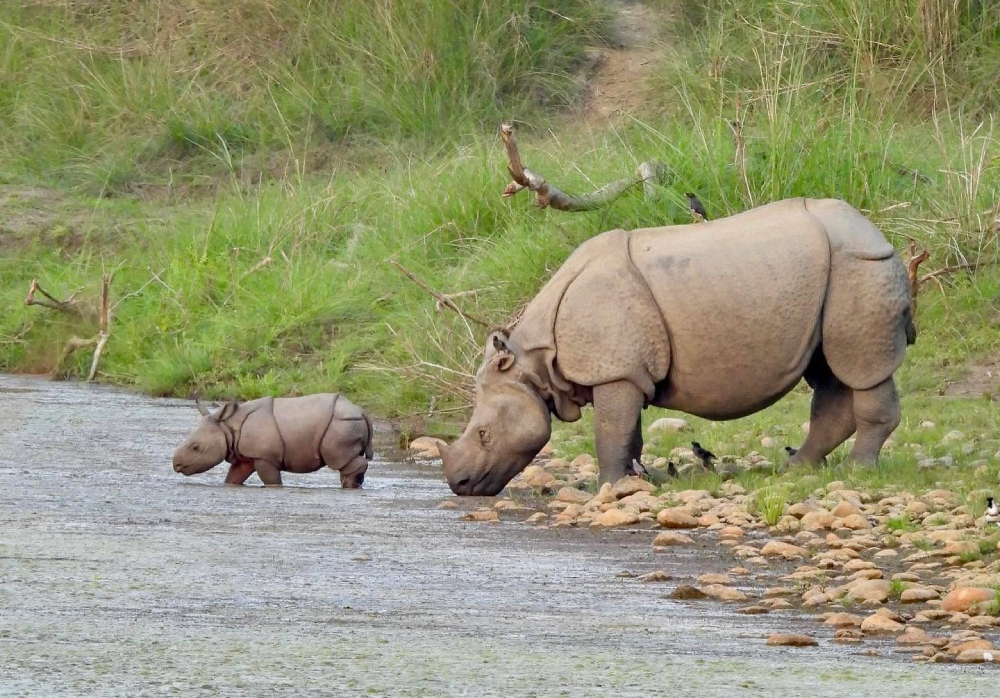
Chitwan, located in the subtropical Terai lowlands about 160 kilometres southwest of Kathmandu, is one of Nepal’s premier wildlife destinations. The heart of all activity here is Chitwan National Park, a UNESCO World Heritage Site renowned for its thriving populations of one-horned rhinoceros, Royal Bengal tigers, wild elephants, and gharials. The park spans across the floodplains of the Rapti, Narayani, and Reu Rivers, creating an ideal habitat for over 500 bird species, dense sal forests, and grasslands.
Tours usually begin from Sauraha, a tourist-friendly village on the edge of the Rapti River. Canoe rides on the river offer serene glimpses of crocodiles and birdlife at sunrise. Jeep safaris into the core jungle areas are the main attraction, typically done either in the early morning or late afternoon. For more immersive experiences, walking safaris and birdwatching tours are also popular.
Outside the park, cultural interaction with the Tharu community adds another layer to the journey. Traditional Tharu villages with their unique mud and bamboo homes can be visited as part of a guided cultural tour. Tharu stick dances and museum visits help guests understand the deep connection the community has with the forest environment.
Chitwan also offers more relaxed activities like visiting the Elephant Breeding Centre, located near Khorsor, or spending time along the Rapti River watching the sunset while local fishermen cast nets in the shallows. For travellers short on time, Chitwan is accessible via daily flights to Bharatpur or 5–6 hours by road from Kathmandu and Pokhara.
Although this part is mostly for tours, implementing some jungle walks can give you a complete package of tours and trekking in Nepal.
Lumbini
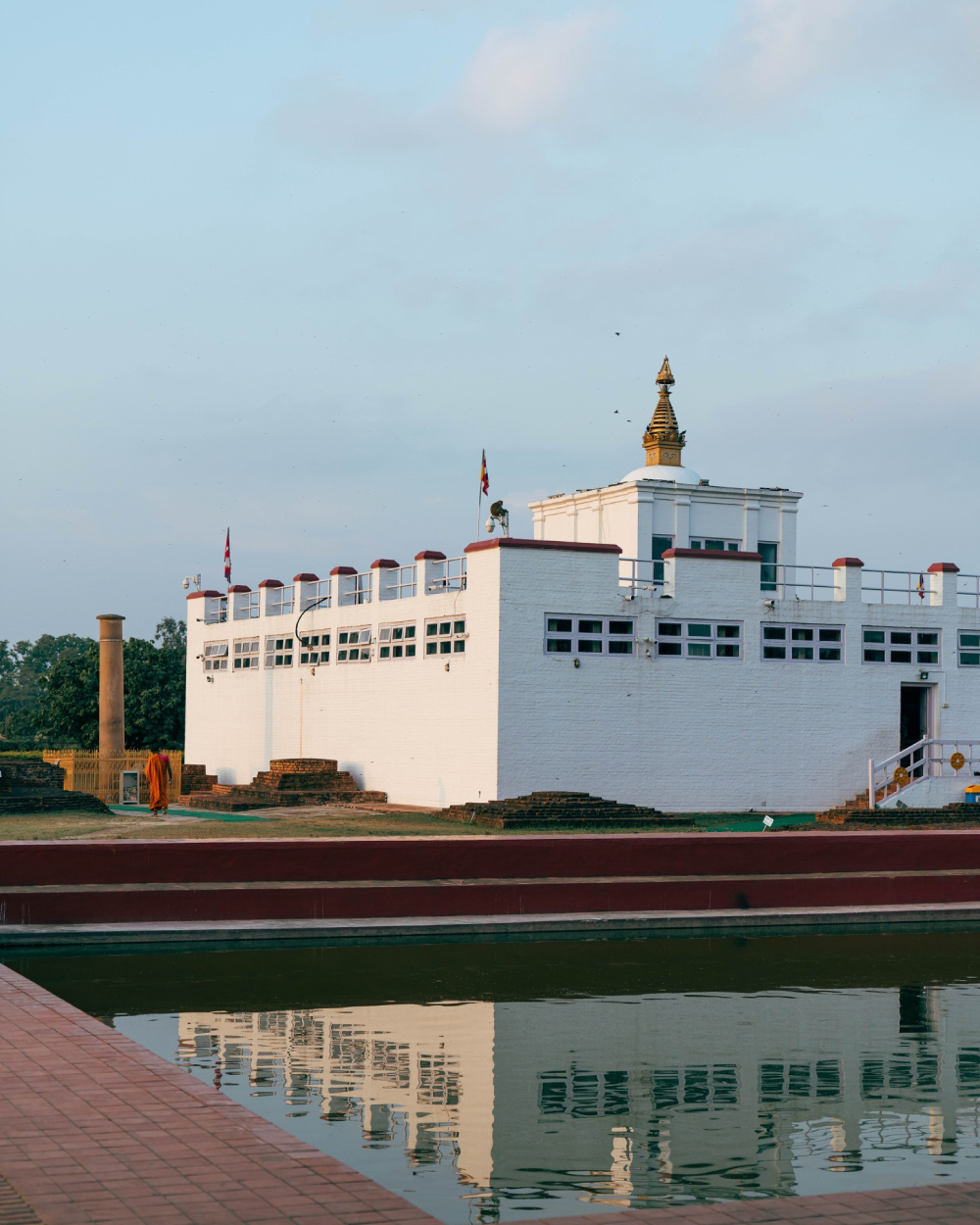
Lumbini, about a 4-hour drive west of Chitwan, is the birthplace of Lord Buddha and one of the most sacred pilgrimage destinations in the world. At the centre of the Lumbini Sacred Garden lies the Maya Devi Temple, which marks the exact spot where Queen Maya Devi gave birth to Siddhartha Gautama around 623 BCE. Inside the temple, visitors can see the marker stone, believed to indicate the precise birthplace, along with archaeological remains from as early as the 3rd century BCE.
Just outside the temple stands the Ashoka Pillar, erected by the Indian Emperor Ashoka during his pilgrimage to the site in 249 BCE. The area surrounding the temple complex is peaceful and vast, separated into two monastic zones—the Eastern Zone for Theravāda monasteries and the Western Zone for Mahāyāna and Vajrayāna temples. These include the golden spires of the Thai monastery, the intricate Korean-style temple, and the Japanese-built World Peace Pagoda, a towering white dome that symbolises harmony.
Lumbini also invites travellers to explore its broader historical setting. About 27 kilometres west is Tilaurakot, the site believed to be the palace of the Shakya kingdom, where Prince Siddhartha lived until the age of 29. Excavated walls, gates, and ancient moats still remain, offering a deeper look into the early life of the Buddha.
Electric rickshaws or bicycles are common ways to move around the sacred zone, and guided tours can help explain the symbolism and history of each monument. For Buddhist pilgrims, monks, or anyone interested in history and peace, Lumbini offers a tranquil and reflective journey unlike anywhere else in Nepal.
Conclusion
From the high Himalayan trails to the serene jungles and ancient heritage sites, tours and trekking in Nepal offer unmatched diversity for every kind of traveller. Whether you're planning Nepal tours for spiritual insight, adventure, or cultural discovery, this country promises experiences that stay with you forever.

